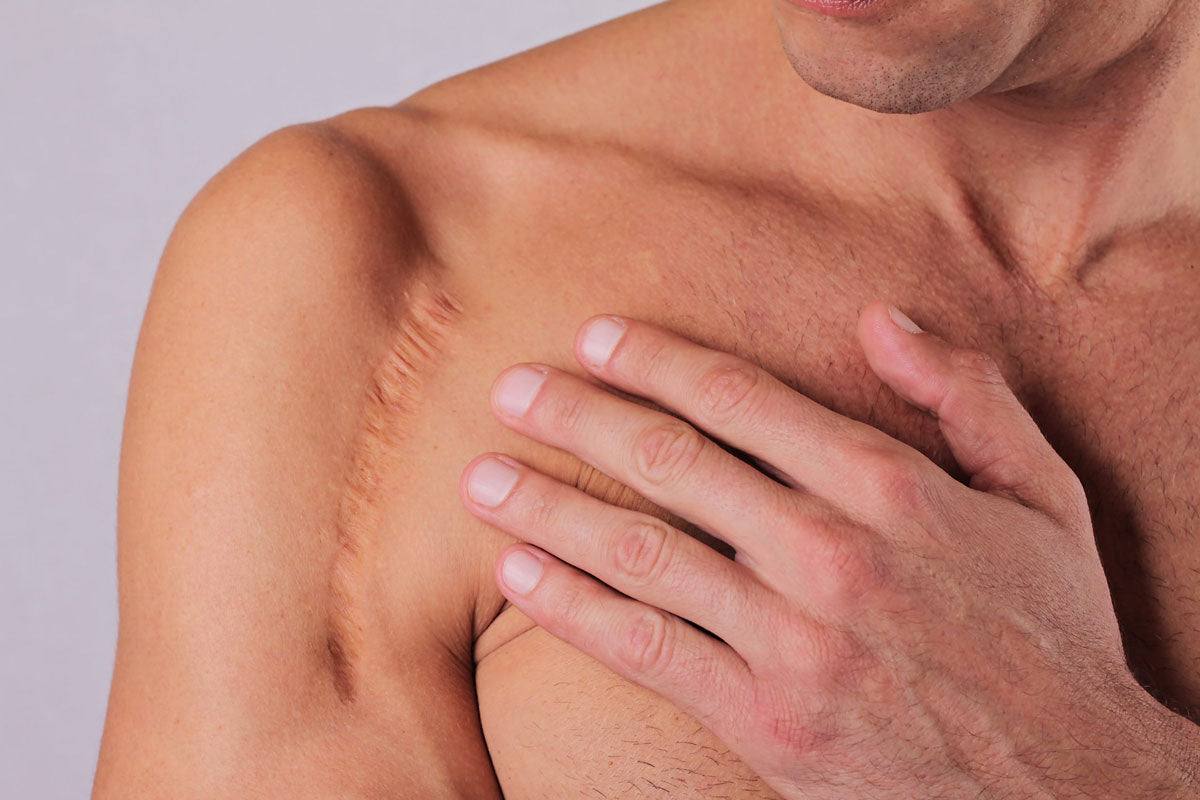Your skin is the first thing that the world sees. A sudden rip, simple tear, or blemish can make a big impact on how your skin looks and feels. It can also leave you feeling less than content with the appearance of your skin.
Unless you live in a bubble, your skin is bound to have a few imperfections. Scars can be frustrating, but they don’t have to compromise how your skin looks. Below, we’ll take a look at the three types of scars and how to treat them.
How Do Scars Happen?
Scars don’t have to be the result of an accident like a gash or a wound. They come in different shapes and sizes and can be a result of natural things like acne or scratching itchy skin. Scarring is the result of your body’s healing process after the skin is broken.
Keloid Scars
There are 2 types of raised scars, the first of which are known as keloids. Keloid scars tend to be on the bigger side of the raised scar category, expanding beyond the wound site.
What Is A Keloid Scar?
Keloid scars are large, dark, and raised scars. In some cases of injury, surgery, or even just a bug bite, scar tissue grows excessively, which creates a hard, smooth scarring called keloid. Most of the time keloids grow up and out beyond the extent and size of the injury, spilling over the borders of the original wound. Keloid scars are most commonly found on the chest, shoulders, and cheeks, but they can occur on any part of the body.
Keloid Scar Treatment
When it comes to treatment for keloid scars, Rejuvaskin offers two options depending on how long the scar has been present. For new keloid scars, we recommend our silicon sheeting paired with our Rejuvasil silicone scar gel, made from a proprietary blend of ingredients designed to smooth raised scarring. For scarring older than 3-6 months, we recommend Scar Esthetique used by itself.
Hypertrophic Scars
While keloid scars may tend to be bigger, hypertrophic scars are a more common experience.
What Is A Hypertrophic Scar?
Hypertrophic scars are also raised, red scars similar to keloids but the scarring does not grow to the extent of a keloid. They take on a red or pink appearance. Hypertrophic scars are more common and may fade with time, though if they don’t there are treatment options to reduce the appearance of the scar.
Hypertrophic Scar Treatment
Similar to treatment for keloid scars, silicone sheets can be used on new scarring to help flatten the scars, used in tandem with Rejuvaskin Scar Esthetique to help diminish the discoloration of the scar; and Scar Esthetique can be used alone on scars older than 3-months.
Acne Scars
If you've ever experienced severe acne, whether as a teenager or an adult, chances are you still have at least a few scars from it. There are many types of acne scars, like deep wells and pits or red marks. Unlike hypertrophic or keloid scars, the cells in acne scars aren’t likely to be as raised as that. Luckily you don’t have to live with the battle scars of your acne.
Acne Scar Treatment
Our Rejuvasil silicone scar gel makes a wonderful treatment for acne scars as it is non-comedogenic and can be put onto the face.
Don’t let your scars define your skin if you don’t want them to. Rejuvaskin products can help to reduce the appearance of your unwanted scarring.





















Leave a comment